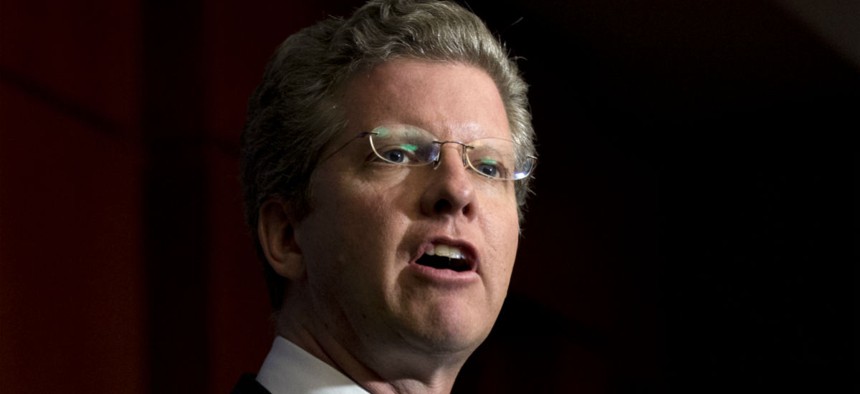
Office of Management and Budget Director Shaun Donovan helped develop the goals in conjunction with the individual agencies. Manuel Balce Ceneta/AP
White House Creates New Leadership Group to Help Execute Final Agency Goals
With eyes toward the exits, the Obama administration sets its last 92 priorities.
President Obama has just 15 months left in office, and he wants to make sure his remaining time controlling the Executive Branch is spent wisely.
Federal agencies released their final “priority goals” last week, laying out 92 objectives they will focus on before the next president is sworn in. Office of Management and Budget Director Shaun Donovan, who helped develop the goals in conjunction with the individual agencies, said the effort exemplifies how Obama has made government work better.
“From the outset, this administration has been committed to making the government smarter, leaner and more effective,” Donovan wrote in a blog post. Obama has accomplished this, Donovan said, by instructing agencies to focus on “infusing data-driven, evidence-based management into how the government conducts business.”
While the agency priority goals have been around since the 2010 Government Performance and Results Modernization Act, OMB -- in coordination with the General Services Administration’s Performance Improvement Council -- has for the first time created a group to share common themes and challenges facing agencies across government as they attempt to reach their goals. The Leaders Delivery Network is made up of 25 officials representing 17 agencies involved in 23 of the 92 goals.
Kate Josephs, executive director of the PIC, told Government Executive the group will allow the career agency officials tasked with supervising a specific goal to discuss new practices and critical skills with their colleagues in other parts of the government. In the past, Josephs said, PIC worked with agency staff directly to help them implement their specific priorities. For their updated targets, however, agency leaders will have the opportunity to “connect with each other and discuss common challenges,” Josephs said.
The members of the network met for the first time at a kick-off event -- where Donovan spoke -- last week. They will hold seven additional sessions between next month and November 2016. Josephs said the group was not meant to be all-inclusive, as it requires a fairly significant time commitment, but would benefit both participants and their personal growth, as well as the agencies where they will bring their lessons home.
The idea for the network came from Lisa Danzig, OMB’s associate director for personnel and performance and formerly the Housing and Urban Development performance improvement officer under then-secretary Donovan. Danzig benefited from a similar networking opportunity, mostly with non-government entities, while at HUD, and wanted to build a similar structure within government. OMB partnered with PIC, which consulted with each agency’s performance improvement officer to develop the program.
The career officials overseeing the agency priorities are “slogging away at difficult goals,” Josephs said, and the new network allows them to step away from that daily grind to learn from the perspective of others.
Donovan highlighted the State Department’s low emission development strategies, the Education Department’s goal of 48.4 percent of adults ages 25-34 having an associate degree or higher by Sept. 30, 2017, and NASA’s plan to ready a new space telescope as examples of the updated priorities. The progress toward reaching those goals is tracked and updated quarterly on performance.gov.
About 40 percent of the administration’s final 92 goals are new, while the rest of are a continuation of existing efforts. About half of the members in the new group are confronting new priorities, and their experience in government ranges from 1.5 years to 40 years.
While membership in the delivery network is limited, Josephs hopes the program could eventually expand if all goes well.
“This is a new effort,” she said. “It’s the first time we’ve ever tried to do this in terms of providing direct insight.” She expects participants to share what they learn and that PIC will eventually share the case studies that arise in the course of the group’s meetings. Already, she said of the agency leaders’ first meeting, participants have discussed areas of overlap in tackling the problems that arise in accomplishing goals.
The group is set to meet through next year, but the goals their agencies are seeking to achieve have deadlines into late 2017. While Josephs and OMB are hoping to develop the leadership necessary to carry out the objectives, their fates could ultimately rest in the next presidential administration committing to the same priorities.
NEXT STORY: Three Practical Steps for Fostering Innovation







